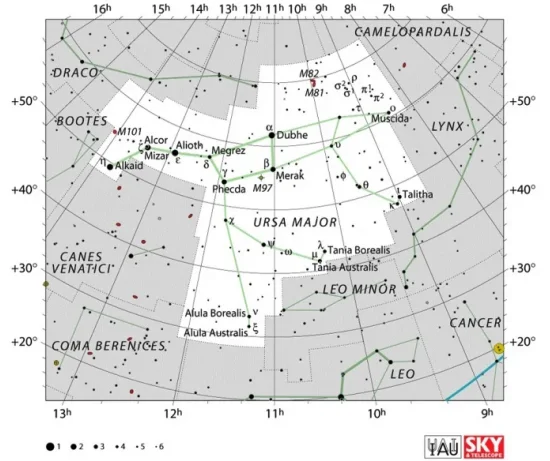David Wilson
Contributor
Let us take each model in the order given. First, the Cetus:
 Italian: "CETUS in gomma corrugata, terminale rigido."
Italian: "CETUS in gomma corrugata, terminale rigido."
Rough translation: "CETUS in corrugated rubber, rigid terminal."
So a flexible-hose breathing tube of the kind where the soft corrugated rubber mouthpiece drops out of the way when it is no longer in use. This type of snorkel is claimed to be popular with scuba divers because of this feature. And the name "Cetus"? Although "cetus" is Latin for "sea monster", the word is perfectly compatible with Polimare's product naming strategy because "Cetus" is also the name of a constellation that is sometimes called "The Whale" in English:

Next up is the Polimare Algol snorkel below:
 Italian: "ALGOL con tubo diritto rigido, fascetta fluorescente."
Italian: "ALGOL con tubo diritto rigido, fascetta fluorescente."
Rough translation: "ALGOL with rigid straight tube, fluorescent band."
This model is an L-shaped breathing tube, which is supposed to be more effective than a traditional J-shaped one in minimising the amount of residual water in the bend when submerged. The name "Algol" reminds me of the old computer programming language of that name, but it is also the name of a bright multiple star in the constellation of Perseus:

Rough translation: "CETUS in corrugated rubber, rigid terminal."
So a flexible-hose breathing tube of the kind where the soft corrugated rubber mouthpiece drops out of the way when it is no longer in use. This type of snorkel is claimed to be popular with scuba divers because of this feature. And the name "Cetus"? Although "cetus" is Latin for "sea monster", the word is perfectly compatible with Polimare's product naming strategy because "Cetus" is also the name of a constellation that is sometimes called "The Whale" in English:
Next up is the Polimare Algol snorkel below:
Rough translation: "ALGOL with rigid straight tube, fluorescent band."
This model is an L-shaped breathing tube, which is supposed to be more effective than a traditional J-shaped one in minimising the amount of residual water in the bend when submerged. The name "Algol" reminds me of the old computer programming language of that name, but it is also the name of a bright multiple star in the constellation of Perseus:






